Optical Isomerism (A-Level Chemistry)
Optical Isomerism
Optical Isomerism
Isomers are molecules with the same molecular formula, but have different arrangements of their atoms.
Stereoisomers are compounds which have the same structural formula but their atoms are arranged differently in space.
Geometric (E/Z) and optical isomerism are the two different types of stereoisomerism.
The following diagram summarises the different types of isomers possible and how they are connected.
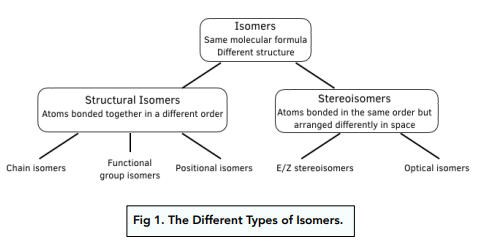
Optical Isomerism
Optical isomers are molecules that are non-superimposable mirror images of each other and they are not identical.
Molecules with a chiral carbon show this kind of isomerism. Chiral carbons, also known as asymmetric carbons, refer to a carbon atom that is bonded to four different functional groups.
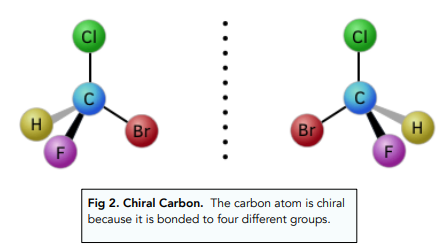
Each carbon in this diagram has four different groups bonded to it.
They have the same structural formula and are arranged so that they are non-superimposable mirror images of each other. This makes them optical isomers.
Here are some other examples of optical isomers you are likely to come across:
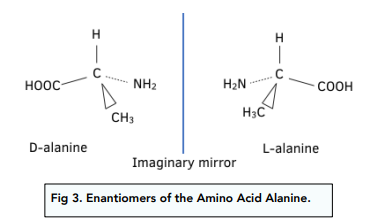
All amino acids, except the simplest, glycine, are optical isomers.
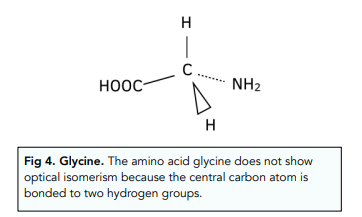
Identifying Optical Isomers
Each of the two isomers is called an enantiomer.
Enantiomers differ in the way they affect plane polarised monochromatic light.
Plane polarised light is produced by passing light waves through a polariser. This absorbs the light waves traveling in all directions except one. Light waves in one plane are produced.
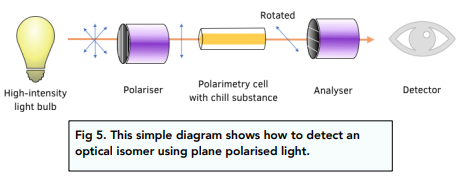
Plane polarised light is passed through the sample containing the optical isomer. Depending on the direction in which the plane of polarisation of plane polarised monochromatic light rotates we get:
- (+) enantiomer – Rotates plane polarised light clockwise.
- (-) enantiomer – Rotates plane polarised light anticlockwise.
Drawing Optical Isomers
You need to be able to draw optical isomers.
1. Draw the structural formula and identify the chiral carbon. The first step is to find the chiral carbon, the carbon with four different substituents bonded to it. An asterisk is sometimes used to identify this carbon atom.
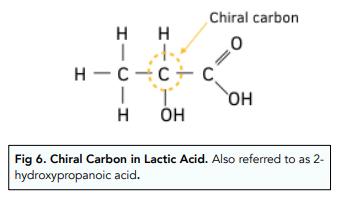
2. Draw the tetrahedral enantiomer and its mirror image. Do this by using the chiral carbon as your centre mark.
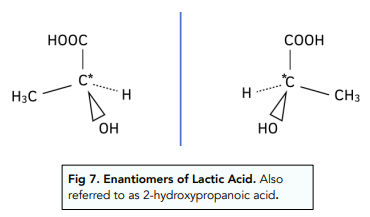
Worked example: Identify the chiral carbon in the following structure.
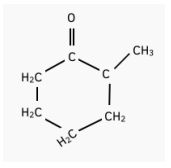
Answer Carbon atom 2 on the ring has four different groups and is chiral
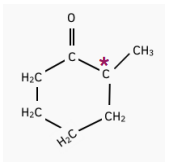
Formation of Racemic Mixtures
A racemic mixture is a 50:50 mixture of both the (+) enantiomer and the (-) enantiomer of an optical active substance.
This happens because there is an equal chance of forming each enantiomer in a chemical reaction.
A racemic mixture is not optically active because the effects of the (+) and (-) isomers cancel each other out.
Production of Lactic Acid
- HCN can be added to ethanal. Hydrogen cyanide, HCN can be added across the C=O bond within ethanal in a nucleophilic addition reaction.
- The CN- nucleophile can attack C=O from above or below. This is because the C=O bond is planar.
- Lactic Said is formed. The nitrile group in 2-hydroxypropanitrile is converted into a carboxylic group to form 2-hydroxypropanoic acid.
- Two different enantiomers of lactic acid are formed. Equal amounts of (+) enantiomer and (-) enantiomer are made This means a racemic mixture has been formed, because there are equal quantities of the (+) and (-) enantiomers.
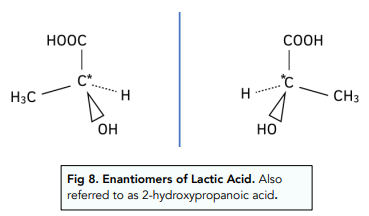
Optical isomerism, also known as stereoisomerism, is a type of isomerism in which molecules have the same molecular formula and bond arrangement, but differ in the arrangement of their atoms in space. This results in molecules that have different properties, including different polarities and reactivities.
Optical isomerism is important in A-Level Chemistry because it helps us to understand and predict the behavior of molecules in a range of different chemical and biological processes. Understanding optical isomerism is key to understanding the properties and reactivities of different compounds, and to designing new drugs and other chemical compounds with specific properties.
Enantiomers are a type of optical isomer that are mirror images of each other, like right and left hands. Diastereomers are optical isomers that are not mirror images of each other.
Optical isomerism is related to the concept of chirality, which refers to the property of a molecule that is not superimposable on its mirror image. Optical isomers are molecules that are chiral.
Enantiomers interact differently with plane-polarized light, due to their different arrangements of atoms in space. One enantiomer will rotate plane-polarized light in one direction, while the other enantiomer will rotate it in the opposite direction.
Yes, enantiomers can have the same physical properties, such as boiling point, melting point, and refractive index. However, they can have different biological and chemical properties, such as different reactivities and potencies.
Enantiomers can interact differently with biological systems, such as enzymes, receptors, and other proteins, due to their different molecular structures. This can result in different pharmacological effects and potencies.
Optical isomerism is important in drug design and development because it allows scientists to design drugs with specific properties and potencies. By understanding the differences between enantiomers, they can design drugs that are more effective and have fewer side effects.
Optical isomers can be separated and characterized using a variety of techniques, including chromatography, spectroscopy, and x-ray crystallography. These techniques allow scientists to study the structures and properties of optical isomers in detail.






Still got a question? Leave a comment
Leave a comment